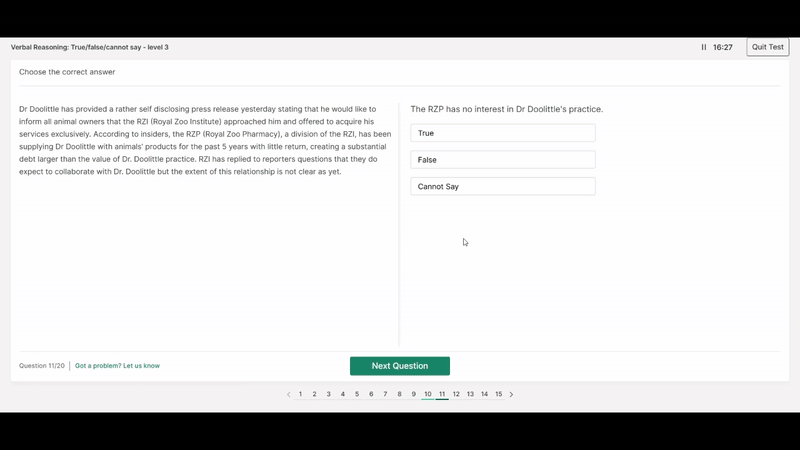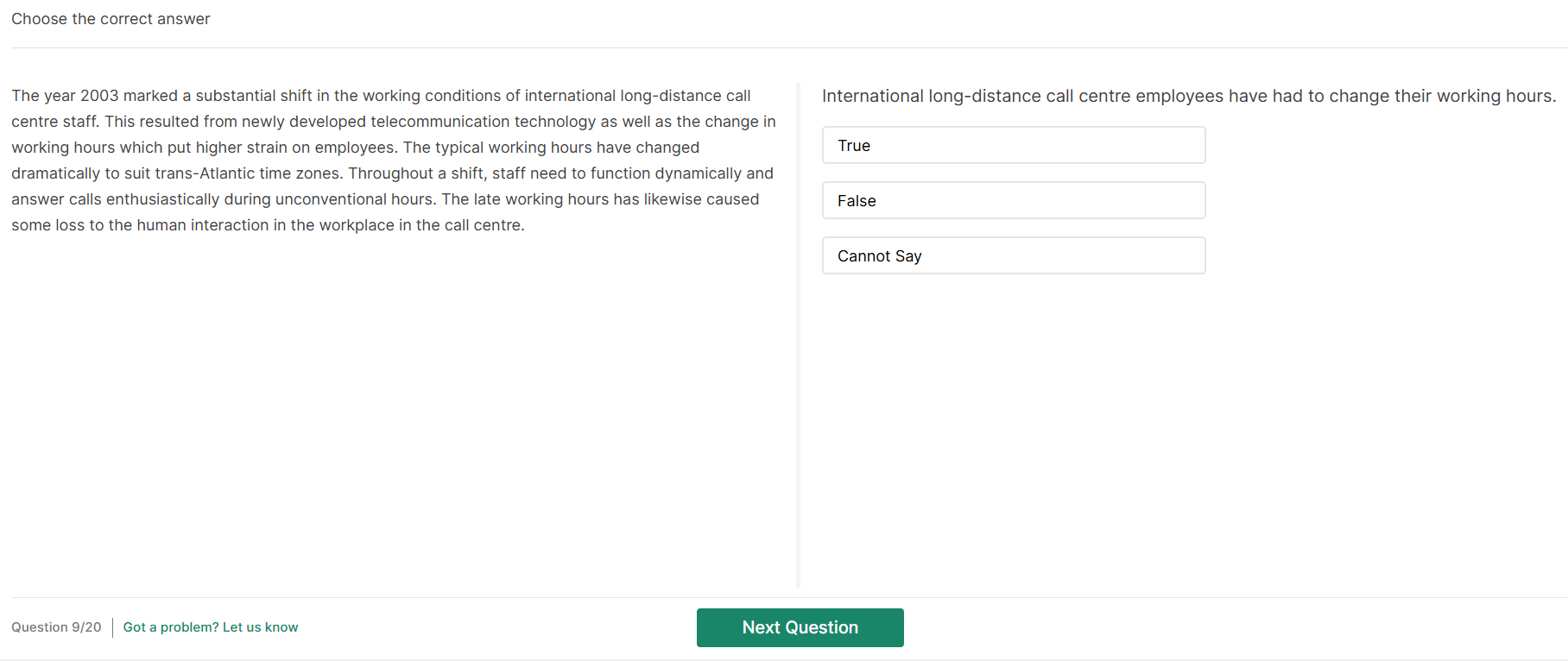Excel in Your Logical Reasoning Test With Confidence
Your ability to think clearly, analyze information, and draw the correct conclusions is precisely what employers are looking for - and the Logical Reasoning test is designed to prove you’ve got what it takes. With JobTestPrep’s comprehensive PrepPack, you’ll sharpen your logical thinking, strengthen your problem-solving skills, and learn how to approach complex scenarios with ease. Plus, you’ll refresh essential math fundamentals that boost your analytical edge. Prepare smarter, tackle every question with confidence, and move one step closer to landing your dream role in the public service.
The Logical Reasoning Test PrepPack includes:
-
Complete coverage for key logical reasoning test types that you’re guaranteed to face on exam day.
-
Logical Reasoning simulations of the most notorious tests and test providers.

- Full Interactive Logical Guide
- 9 T/F/CS Reasoning tests
- 6 Deductive Reasoning tests
- 30 Figural Logical Reasoning tests
- 15 Full Logical Simulations (CCAT, SHL, Watson Glaser, Ravens, Alva)
Discover What's Inside Our Logical Reasoning Test PrepPack
Who Are We?
At JobTestPrep, we’ve helped thousands of candidates pass competitive hiring assessments, including those at McKinsey and other top consulting firms. Our materials are designed by psychometric experts and updated based on real candidate feedback to reflect the latest game formats.
Founded in 1992 by David Meshulam, JobTestPrep has become a trusted leader in online test preparation. With 30+ years of experience, 220+ courses, and over a million success stories, we combine expert-crafted PrepPacks with AI tools like our CV Analyzer and Interview Prep platform to help candidates worldwide prepare with confidence.
FAQs
You will have instant access to your PrepPack, which includes all your practice tests. You can start practicing immediately, learning from detailed explanations and guides, while tracking your performance with accurate, tailored questions to help you understand the correct approach to solving your assessment.
After your purchase, you will receive two emails. The first will contain your payment receipt, and the second will include a login link along with information about our general terms, conditions, and refund policy. To access your PrepPack, simply log in and reset your password.
No, there is no limit. Your progress is saved in your account, allowing you to revisit previous attempts. Our performance tracker helps you focus on the test sections that require more attention.
Yes, you can extend your practice period. Simply contact our customer success team via c.serv@jobtestprep.com.








